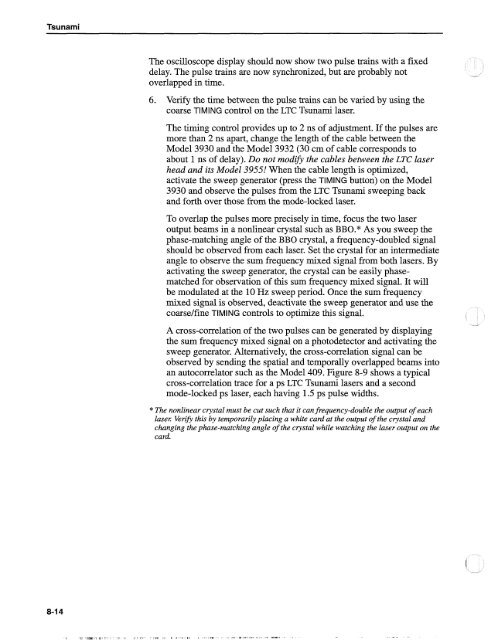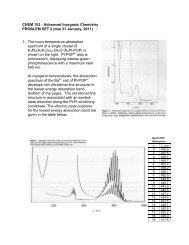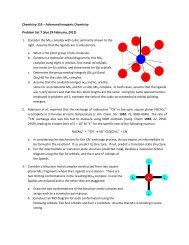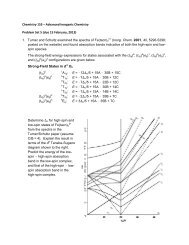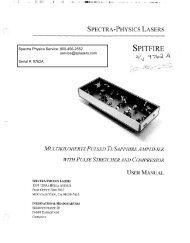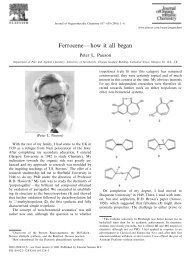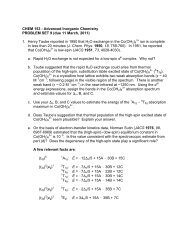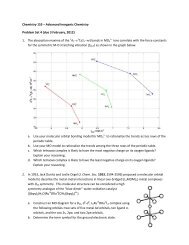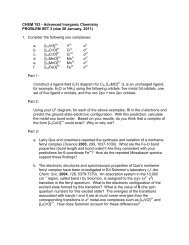Tsunami - Beckman Institute Laser Resource Center
Tsunami - Beckman Institute Laser Resource Center
Tsunami - Beckman Institute Laser Resource Center
Create successful ePaper yourself
Turn your PDF publications into a flip-book with our unique Google optimized e-Paper software.
<strong>Tsunami</strong><br />
The oscilloscope display should now show two pulse trains with a fixed<br />
delay. The pulse trains are now synchronized, but are probably not -<br />
overlapped in time.<br />
6. Verify the time between the pulse trains can be varied by using the<br />
coarse TIMING control on the LTC <strong>Tsunami</strong> laser.<br />
The timing control provides up to 2 ns of adjustment. If the pulses are<br />
more than 2 ns apart, change the length of the cable between the<br />
Model 3930 and the Model 3932 (30 cm of cable corresponds to<br />
about 1 ns of delay). Do not modify the cables between the LTC laser<br />
head and its Model 3955! When the cable length is optimized,<br />
activate the sweep generator (press the TIMING button) on the Model<br />
3930 and observe the pulses from the LTC <strong>Tsunami</strong> sweeping back<br />
and forth over those from the mode-locked laser.<br />
To overlap the pulses more precisely in time, focus the two laser<br />
output beams in a nonlinear crystal such as BBO.* As you sweep the<br />
phase-matching angle of the BBO crystal, a frequency-doubled signal<br />
should be observed from each laser. Set the crystal for an intermediate<br />
angle to observe the sum frequency mixed signal from both lasers. By<br />
activating the sweep generator, the crystal can be easily phasematched<br />
for observation of this sum frequency mixed signal. It will<br />
be modulated at the 10 Hz sweep period. Once the sum frequency<br />
mixed signal is observed, deactivate the sweep generator and use the<br />
coarselfine TIM 1 NG controls to optimize this signal.<br />
A cross-correlation of the two pulses can be generated by displaying<br />
the sum frequency mixed signal on a photodetector and activating the<br />
sweep generator. Alternatively, the cross-correlation signal can be<br />
observed by sending the spatial and temporally overlapped beams into<br />
an autocorrelator such as the Model 409. Figure 8-9 shows a typical<br />
cross-correlation trace for a ps LTC <strong>Tsunami</strong> lasers and a second<br />
mode-locked ps laser, each having 1.5 ps pulse widths.<br />
- +<br />
* The nonlinear crystal must be cut such that it canfrequency-double the output of each<br />
lasel: Verify this by temporarily placing a white card at the output of the crystal and<br />
changing the phase-matching angle of the crystal while watching the laser output on the<br />
card.


